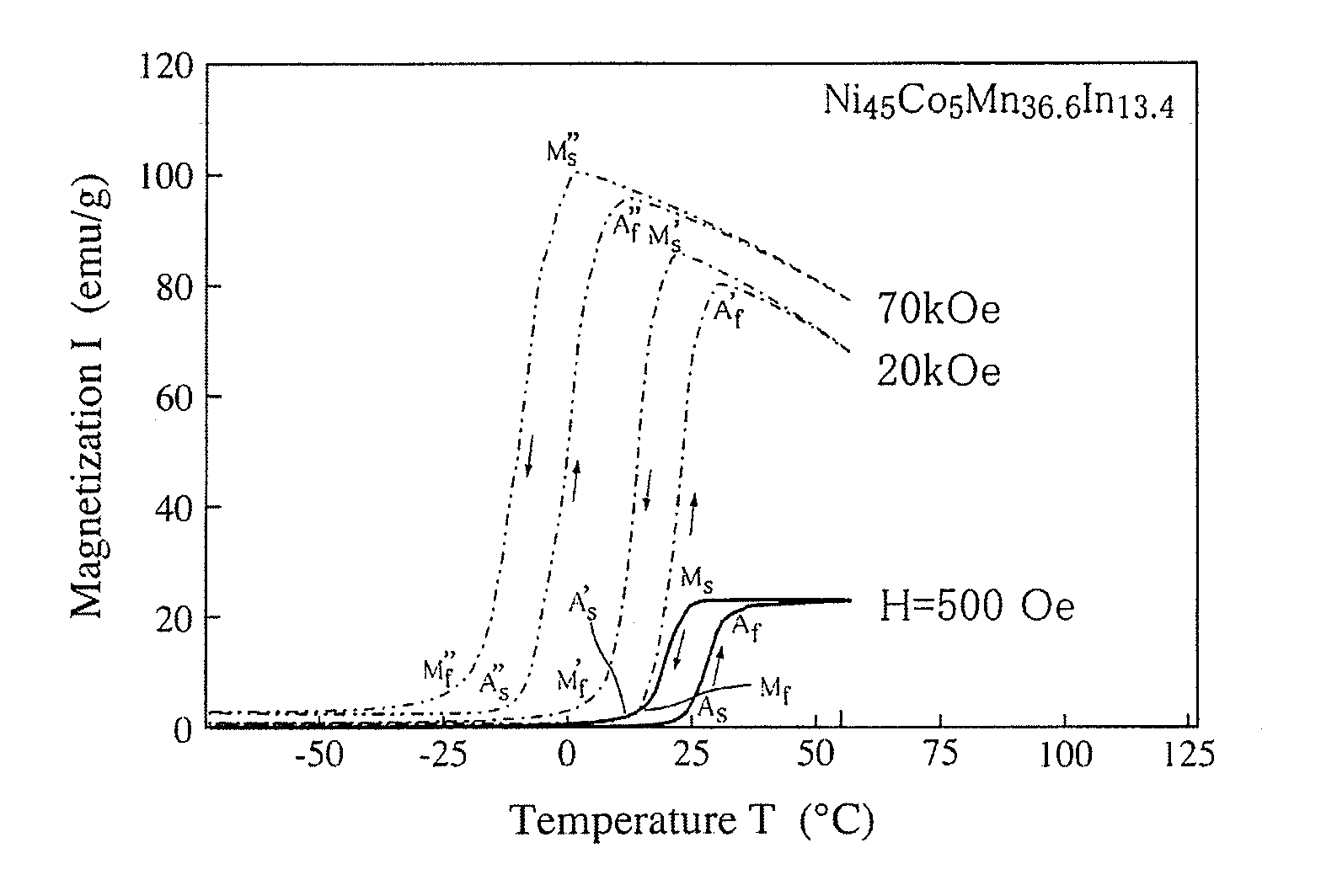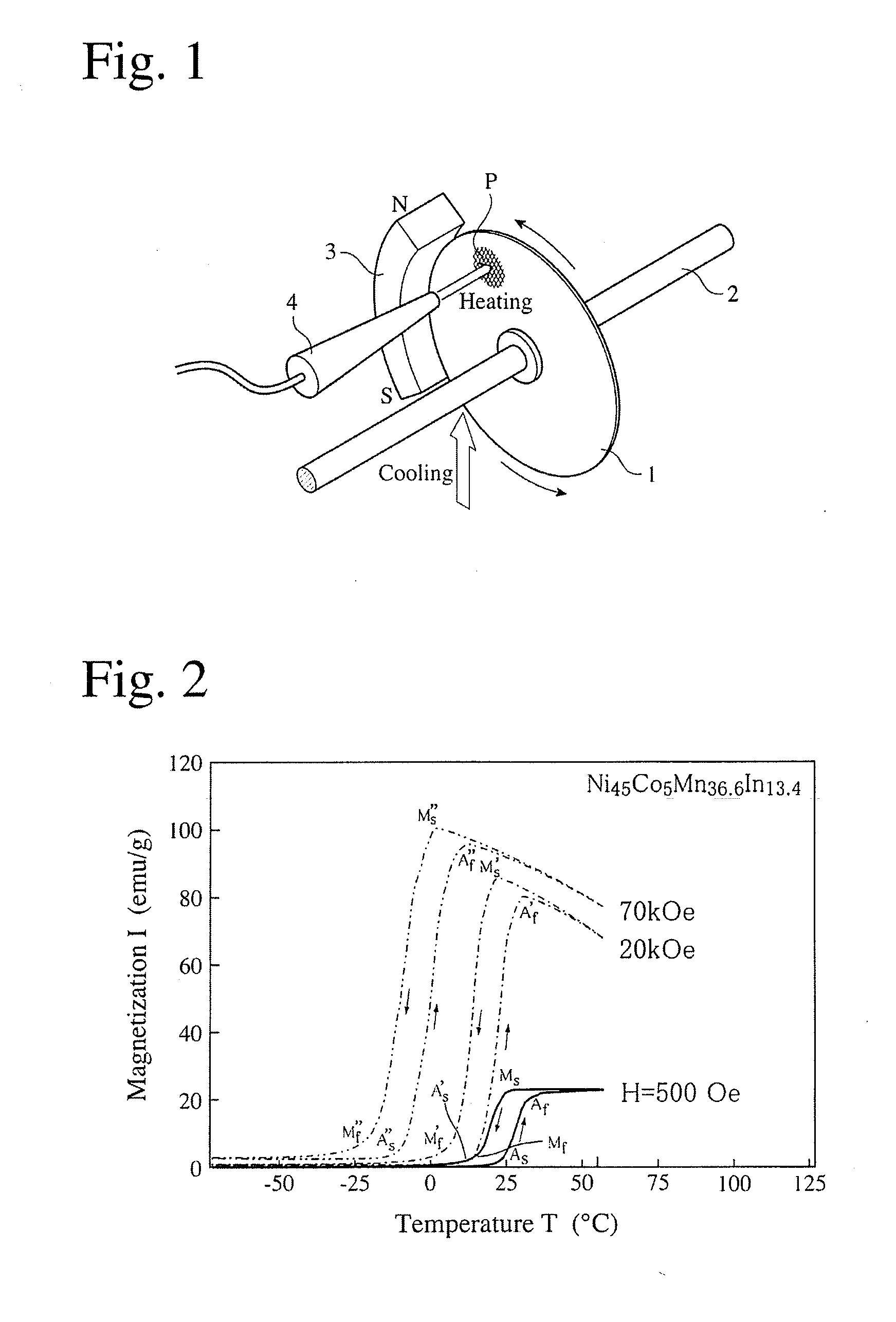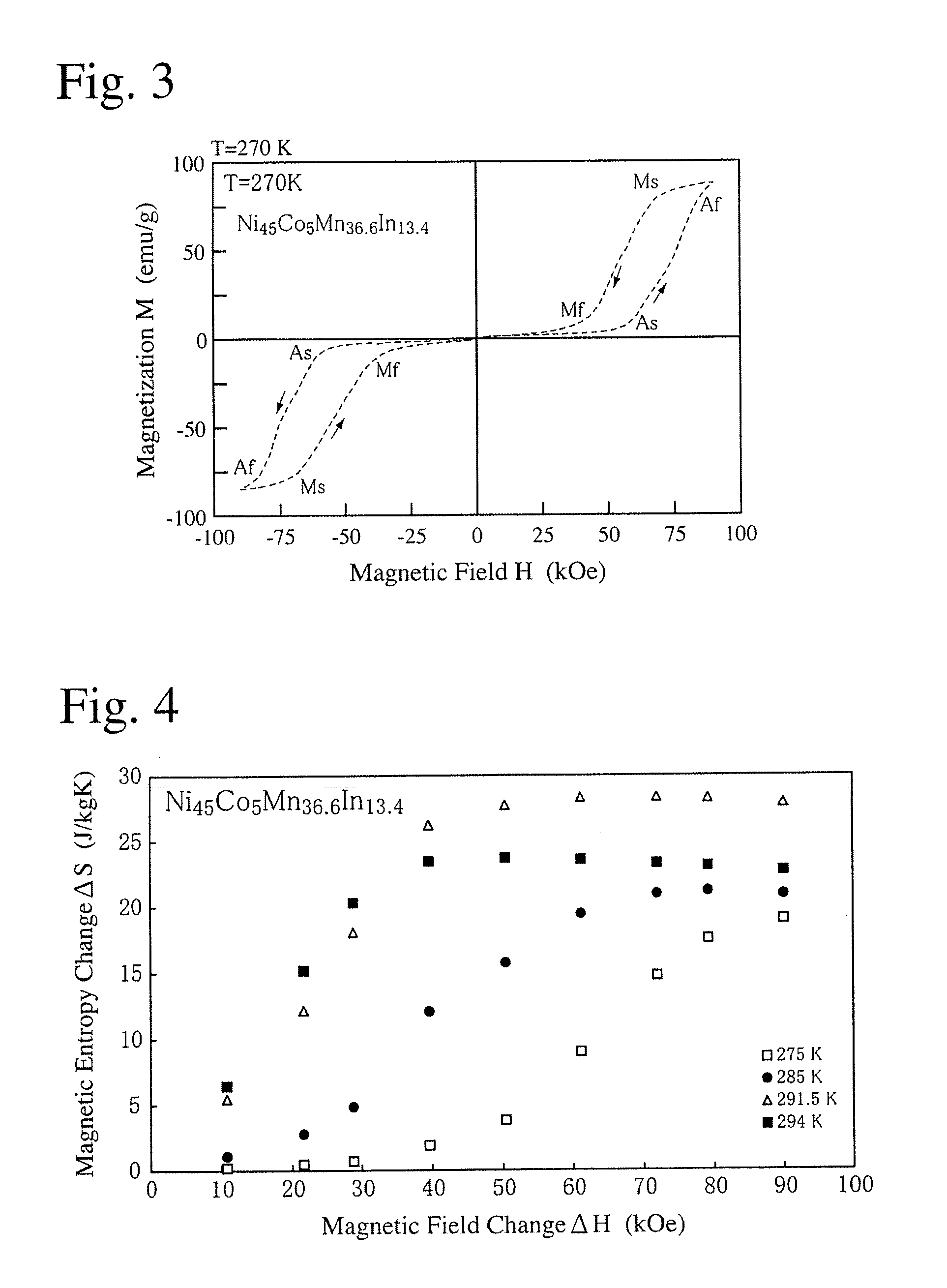Ferromagnetic shape memory alloy and its use
a ferromagnetic shape memory and alloy technology, applied in the field of ferromagnetic shape memory alloys, can solve the problems of insufficient characteristics of magnetically driving actuators formed by this ferromagnetic shape memory alloy at room temperature, failure to obtain a large strain, and slow response speed, and achieve excellent shape memory characteristics
- Summary
- Abstract
- Description
- Claims
- Application Information
AI Technical Summary
Benefits of technology
Problems solved by technology
Method used
Image
Examples
example 21
(1) Production of Sample
[0103]A sample of 3 mm×3 mm×3 mm was cut out of an ingot obtained by high-frequency-melting and rapidly cooling an alloy having the same composition as in Example 5. The sample was annealed to have a single crystal, subjected to a solution treatment at 900° C. for 3 days, and then charged into water for rapidly cooling. The sample had Ms of 50° C. and Tc of 104° C. without a magnetic field.
(2) Shape Memory Test
[0104]Using a compression test machine, compression stress was applied to the sample to a strain of 7.2% at room temperature. The resultant stress-strain curve is shown in FIG. 5. When the compressed sample was heated to 100° C., 100-% shape recovery occurred.
example 22
(1) Production of Sample
[0105]A single crystal sample having Ms of 13° C. and Tc of 106° C. without a magnetic field was produced in the same manner as in Example 21, except for using an alloy having the same composition as in Example 3.
(2) Superelasticity Test
[0106]Using a compression test machine, compression stress was applied to the sample to a strain of 6.2% at room temperature. The resultant stress-strain curve is shown in FIG. 6. A shape recovery ratio determined from this stress-strain curve was 99%.
example 23
(1) Production of Sample
[0107]An alloy having the same composition as in Example 5 was high-frequency-melted and rapidly cooled to form an ingot, of which a sample of 1.5 mm×1.5 mm×2 mm was cut out. The sample was treated to have a single crystal as in Example 21. The resultant sample had Ms of 50° C. and Tc of 104° C. without a magnetic field.
(2) Measurement of Magnetostriction
[0108]With a 3-% compression strain added to the sample, a magnetic field was applied to the sample at room temperature, to measure its magnetostriction by a three-terminal capacitance method. The resultant strain-magnetic field curve is shown in FIG. 7. Shape change due to martensitic reverse transformation occurred when the applied magnetic field neared 30 kOe (2,387 kA / m), and reached 2.8% at 80 kOe (6,366 kA / m).
[0109]With a 4.5-% compression strain added to the same sample, a magnetic field was adapted to the same at room temperature, to measure its magnetostriction by a three-terminal capacitance method....
PUM
| Property | Measurement | Unit |
|---|---|---|
| Percent by atom | aaaaa | aaaaa |
| Percent by atom | aaaaa | aaaaa |
| Percent by atom | aaaaa | aaaaa |
Abstract
Description
Claims
Application Information
 Login to View More
Login to View More - R&D
- Intellectual Property
- Life Sciences
- Materials
- Tech Scout
- Unparalleled Data Quality
- Higher Quality Content
- 60% Fewer Hallucinations
Browse by: Latest US Patents, China's latest patents, Technical Efficacy Thesaurus, Application Domain, Technology Topic, Popular Technical Reports.
© 2025 PatSnap. All rights reserved.Legal|Privacy policy|Modern Slavery Act Transparency Statement|Sitemap|About US| Contact US: help@patsnap.com



